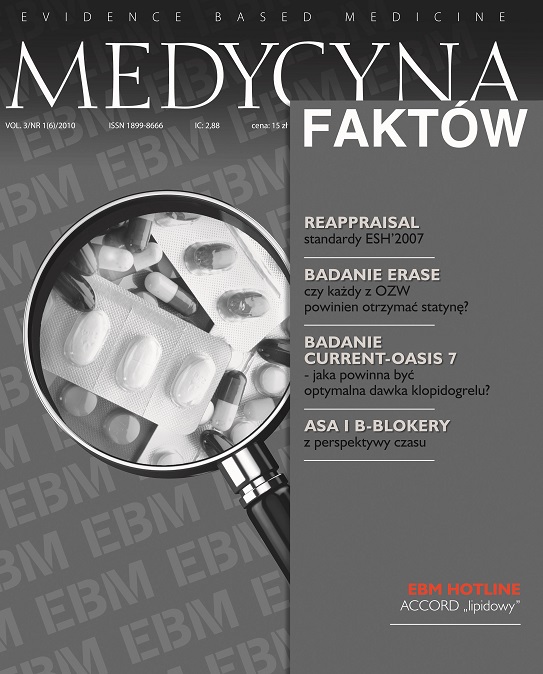Commentary on Reappraisal of European guidelines on hypertension management (part I) Review article
Main Article Content
Abstract
In 2009 The European Society of Hypertension has published a scientific statement on management of hypertension. The statement updates joint ESH and ESC guidelines published in 2007. This document takes into consideration the most important data published within the last two years that warrant some changes and additions in the treatment guidelines. Statement includes new data regarding the importance of target organ damage in total cardiovascular risk stratification and new analyses on threshold and target blood pressure values during treatment. Some commentaries are dedicated to choice of antihypertensive drugs, in particular regarding the use of beta-blockers as first-line therapy, the importance of combined therapy and the use of fixed-dose combinations in the treatment of hypertension. An approach to treatment in special populations, including the very elderly in whom convincing data showing outcome benefits of antihypertensive therapy are also discussed.
Article Details
Copyright © by Medical Education. All rights reserved.
References
2. Guidelines Committee. 2007 Guidelines for the Management of Arterial Hypertension The Task Force for Management of Arterial Hypertension of the European Society of Hypertension (ESH) and of the European Society of Cardiology (ESC). J. Hypertens. 2007; 25: 1105-1187.
3. Zanchetti A., Grassi G., Mancia G.: When should antihypertensive drug treatment be initiated and to what levels should systolic blood pressure be lowered? A critical reappraisal. J. Hypertens. 2009; 27: 923-934.
4. Zanchetti A.: Bottom blood pressure or bottom cardiovascular risk? How far can cardiovascular risk be reduced? J. Hypertens. 2009; 27: 1509-1520.
5. ADVANCE Collaborative Group. Effects of a fixed combination of perindopril and indapamide on macrovascular and microvascular outcomes in patients with type 2 diabetes mellitus (the ADVANCE trial): a randomised controlled trial. Lancet 2007; 370: 829-840.
6. Hansson L., Zanchetti A., Carruthers S.G. et al.: Effects of intensive blood-pressure lowering and low-dose aspirin in patients with hypertension: principal results of the Hypertension Optimal Treatment (HOT) randomised trial. Lancet 1998; 351: 1755-1762.
7. National Institute for Health and Clinical Excellence [online: www.nice.org.uk; 2006].
8. Law M.R., Morris J.K., Wald N.J.: Use of blood pressure lowering drugs in the prevention of cardiovascular disease: meta-analysis of 147 randomised trials in the context of expectations from prospective epidemiological studies. BMJ 2009; 338: 1665-1683.
9. Bangalore S., Sawhney S., Messerli F.H.: Relation of beta-blocker-induced heart rate lowering and cardioprotection in hypertension. J. Am. Coll. Cardiol. 2008; 52: 1482-1489.

